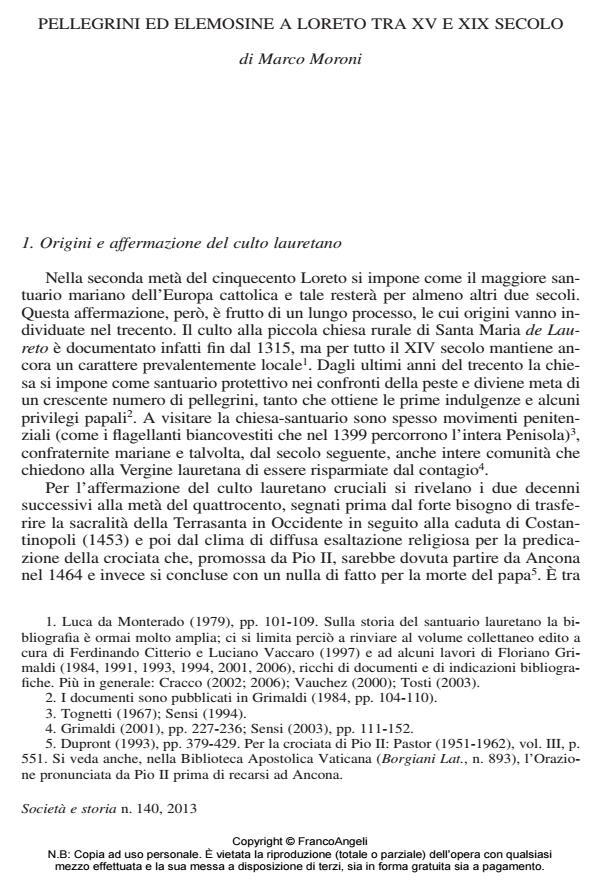Pilgrims and alms in Loreto between the fifteenth and nineteenth centuries
Journal title SOCIETÀ E STORIA
Author/s Marco Moroni
Publishing Year 2013 Issue 2013/140
Language Italian Pages 23 P. 319-341 File size 819 KB
DOI 10.3280/SS2013-140004
DOI is like a bar code for intellectual property: to have more infomation
click here
Below, you can see the article first page
If you want to buy this article in PDF format, you can do it, following the instructions to buy download credits

FrancoAngeli is member of Publishers International Linking Association, Inc (PILA), a not-for-profit association which run the CrossRef service enabling links to and from online scholarly content.
The essay focuses on the economic aspect of pilgrimage. The case analyzed is the Holy House of Loreto, which after the Council of Trent imposes itself as the largest Marian shrine of Catholic Europe. After listing the essential stages in the gradual rise of the Loreto cult, from the fourteen century to the final triumph in the two decades following the mid-fifteenth century, the essay analyzes the evolution of the pilgrim phenomenon. When the flow of pilgrims takes on mass dimensions, the urge is to provide not only religious services, but also reception services to meet their needs. The paper then focuses on the theme of alms. In the case of Loreto it is possible to quantify accurately (for almost four centuries: from the beginning of the sixteenth cen- tury to the early twentieth century) the flow of offerings left by pilgrims in the coffers of the sanctuary of the Holy House. It is a very detailed and extremely significant record, enabling us not only to understand the inner financing of a large sanctuary, but also to outline a kind of trend in the religious behaviour of Europe during the modern age. These data should not be overvalued, due to the problems of interpretation they raise, but anyway they have an unquestionable value. In the last half-century researching historians have been searching for quantitative indicators that would allow a serial study of religious attitudes and practices: the Loreto records can now offer a supplementary contribution in this direction.
Keywords: Pilgrimages, devotional objects, Holy house of Loreto, history of mentality
- Quale storia della società? Uno sguardo sull'epoca moderna Paola Bianchi, in SOCIETÀ E STORIA 178/2023 pp.711
DOI: 10.3280/SS2022-178005
Marco Moroni, Pellegrini ed elemosine a Loreto tra XV e XIX secolo in "SOCIETÀ E STORIA " 140/2013, pp 319-341, DOI: 10.3280/SS2013-140004